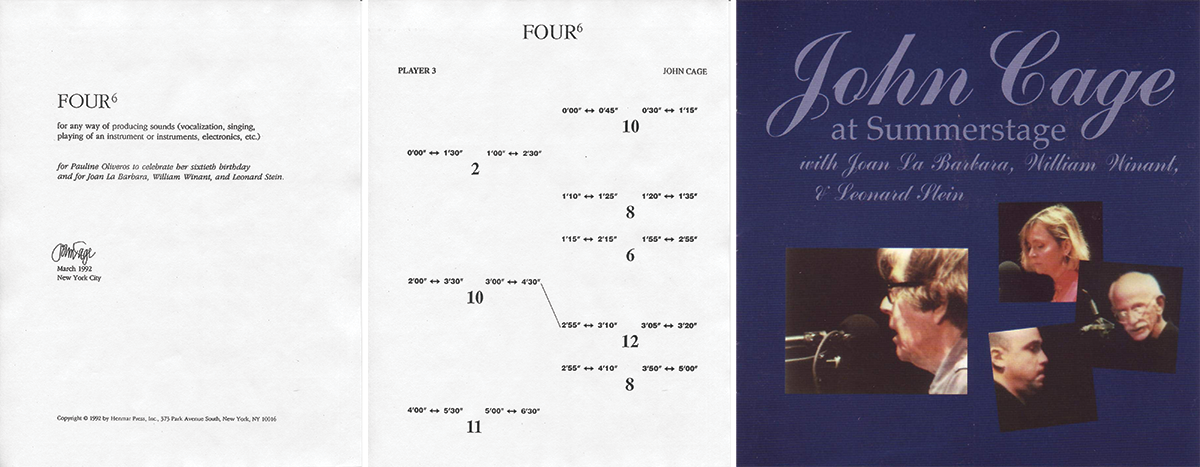WGXC-90.7 FM


All Things Cage: Laura Kuhn on "John Cage at Summerstage" (1992)
90.7-FM in NY's Upper Hudson Valley and wgxc.org/listen everywhere
http://www.wgxc.org/
wavefarm.org/listen and 1620-AM at Wave Farm
https://audio.wavefarm.org/transmissionarts.mp3
Hosted by Laura Kuhn, Executive Director of the John Cage Trust.
This week on “All Things Cage” Kuhn opts to do one more program on the subject of Cage’s “number pieces,” this time focusing on his Four6 (1992). The recording we will hear is a concert given at Summerstage in New York’s Central Park on July 23, 1992, and this included what would be Cage’s last concert appearance, given his unexpected death on August 12, in the closing Four6. This was the premiere performance of the piece, and the cast was stellar: Cage himself, along with Joan La Barbara, vocalists, Leonard Stein, piano, and William Winant, percussion. The program also included Cage’s Music for Three (1984; rev. 1987), featuring Winant, La Barbara, and Stein, and Eight Whiskus (1984), a work composed for La Barbara and sung by her here (twice!), which comprises eight mesostics written on the first three words of a text written by the late Australian spoken word poet Chris Mann entitled “Whistlin is did.” The concert was later released as John Cage at Summerstage on the Music & Arts label, as CD-875, in 1995.
Four6 is a somewhat unusual work in the “number pieces,” in that instruments are unspecified, as are the specific sounds that are made. As Cage instructs in his performance notes:
- Choose twelve different sounds with fixed characteristics
(amplitude, overtone structure, etc.). Play within the flexible
time brackets given. When the time brackets are connected
by a diagonal line they are relatively close together. When
performed as a solo, only the first player’s part is used and the
piece is called ONE7 (that is, the seventh work in the series
of “number pieces” that is scored for a solo player).
"All Things Cage" is a weekly program featuring conversations between Laura Kuhn, Director of the John Cage Trust, and Cage experts and enthusiasts from around the world. If you’d like to propose a guest or a topic for a future program, write directly to Laura at lkuhn@johncage.org. She’d love to hear from you.
The late Pulitzer Prize-winning biographer Kenneth Silverman once described his Begin Again: A Biography of John Cage (Knopf, 2012) as the hardest book he’d ever written. This was because, as he put it, pick up any rock and there’s John Cage! Indeed, Cage was not only a world-renowned composer, numbering among his compositions the still notoriously tacet 4’33”, but a ground-breaking poet, a philosopher, a chess master who studied with Marcel Duchamp, a macrobiotic chef, a devotee of Zen Buddhism, a prolific visual artist, and an avid and pioneering mycologist. He was also life partner to the celebrated American choreographer, Merce Cunningham, for nearly half a century, and thus well known in the world of modern dance.
No wonder, then, that nearly everyone who encounters the man or his life’s work has something interesting to say about John Cage!
Playlist:
- Music for Three / Joan La Barbara
- 8 Whiskus / Joan La Barbara



